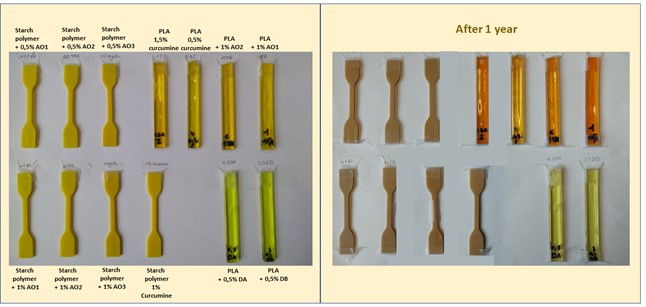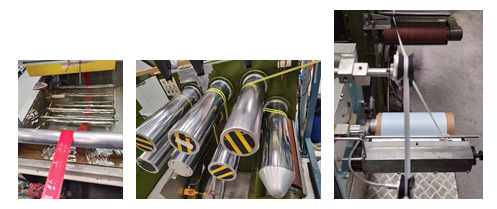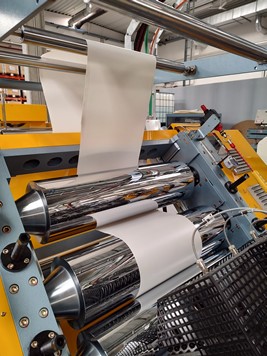As a follow-up on the results of the newletter of June 14th ‘stabilization of curcumine in bioplastics’, it can be mentioned that the best color stability is reached when using the modified curcumine additives, as produced by Avans Hogeschool (See figure 1). Samples were aged behind a window and it seemed that after 1 year, all non-modified curcumine samples colored brown to dark orange. In case the modified variants (DA and DB curcumine) were used, the yellow color was maintained, but the saturation of the color diminished.
Processing of colored bio-plastic materials

Figure 1: selection of curcumine containing starch-based polymer and PLA based samples. As indicated in the figure some contain an AO (anti-oxidant) and in case ‘DA’ and ‘DB’ are mentioned, modified (by Avans Hogeschool) curcumine was used as colorant.
In the meantime, preparations have been made to produce some demonstrators. For now, the focus was on the production of tapes and thermoformed products, containing commercial color masterbatches. Hard work is being delivered to scale-up the modified curcumin production in order to make similar products on CTB’s semi-industrial lines, containing the modified curcumine variants. As a preview, figures 2 and 3 show some pictures of the tape and foil manufacturing processes.

Figure 2: Production of tapes containing commercial color masterbatches

Figure 3: Foil extrusion process to make sheets for thermoforming
CurCol News Update!
Do you want to receive our news update twice a year? We share the results and progress of the CurCol project.
Subscribe now!